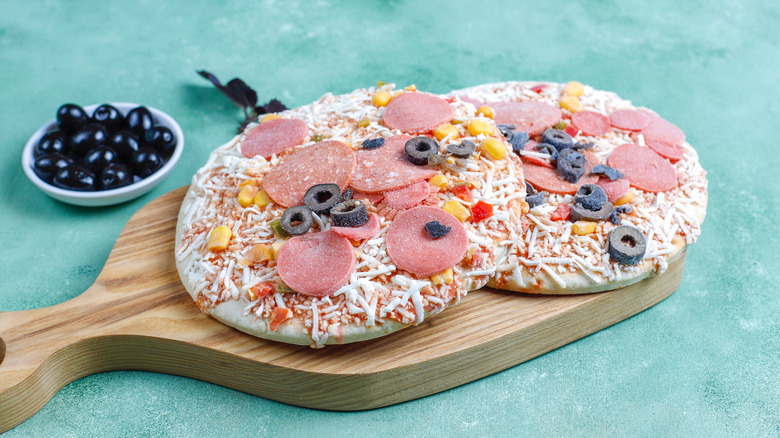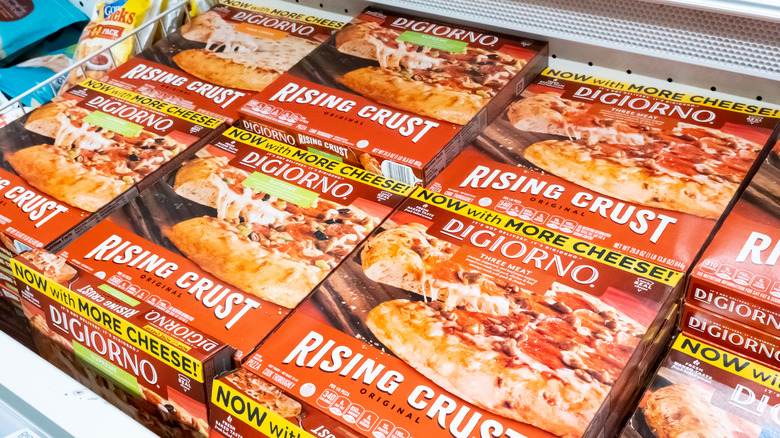Why 1995 Was Such An Important Year For Frozen Pizza
It's hard to go wrong with pizza, whether you're sitting down to a restaurant pie or kneading dough, simmering sauce, and grating cheese in your home kitchen. But we've all had those moments in which either of those two options are just too labor-intensive and all we can muster the energy for — when the pizza craving hits — is popping a frozen pie into the oven to enjoy about 20 minutes later.
And when it comes to frozen food, pizza is a legit choice: Pizza freezes very well, according to Fine Dining Lovers, and well-wrapped, flash-frozen commercial pies can be nearly as tasty as fresh ones. So it's no surprise that Americans love them: Two out of three households report chowing down on frozen pizza regularly, according to CreditDonkey.
Many of us grew up on frozen pizza, but the treat that's available at any grocery store today didn't hit the market until the early 1950s, CNBC reports. Since then, of course, the industry has become a behemoth, and one whose history was marked by one important year: 1995.
In 1995, DiGiorno hit the scene
Whether you're an experienced or occasional frozen pizza eater, the first brand name that comes to mind is most likely DiGiorno. With its unforgettable tagline, "It's not delivery. It's DiGiorno," the brand is a bonafide titan: Along with fellow Nestlé-owned frozen pizza manufacturers Tombstone and Jack's, it accounts for an almost 40% share of the market, according to Food Dive.
What's truly incredible is how meteoric DiGiorno's rise has been. The brand hit the market in 1995, according to CNBC, and was already the top-selling frozen pizza in the nation by 1998, a position it has occupied ever since. In 2021 alone, the brand took in around $6 billion dollars in sales, according to Statista. And there's a pun in there somewhere, because what DiGiorno is most well known for is actually its "rising crust," which rises in the heat of the oven and becomes nice and puffy (At the time of its release, competitors' frozen pizzas featured flat, crunchy crusts that didn't mimic delivery pies quite as well).
CNBC explains that DiGiorno's crust includes oils, yeast, baking soda, and food additives that help expand the crust and keep it stable and moist as it bakes, and its packaging features modern vacuum-sealing that keeps the pizza fresh. So the next time you're admiring your DiGiorno pizza's golden, risen crust baking away in the oven, know that you have modern food technology to thank for the deliciousness.

